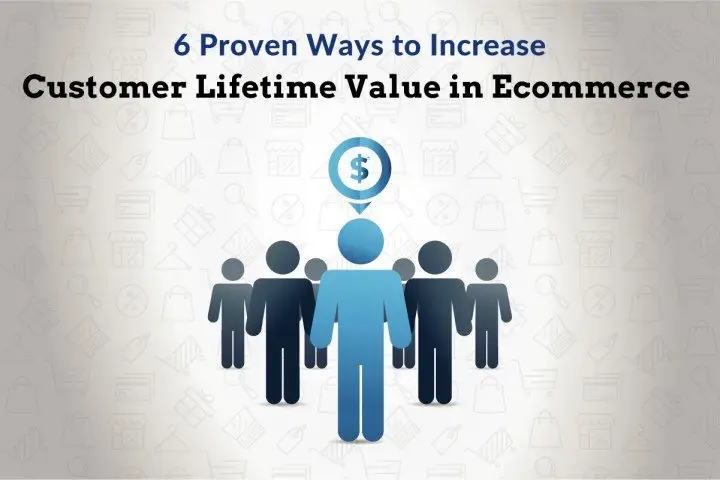In the dynamic landscape of e-commerce, cultivating a loyal customer base is not just about making one-time sales, but rather fostering long-term relationships that drive sustained business growth. This is where the concept of Customer Lifetime Value (CLV) comes into play—a crucial metric that assesses the total value a customer brings to a business over the entirety of their engagement. Increasing CLV involves strategies that go beyond mere transactional interactions, focusing on building trust, personalization, exceptional experiences, and continuous engagement. In this pursuit, e-commerce enterprises must navigate the intricacies of customer preferences, data utilization, and innovative marketing approaches to establish lasting brand-consumer connections. This exploration delves into the multifaceted realm of strategies to enhance Customer Lifetime Value, illuminating the means by which businesses can transform one-time shoppers into devoted, lifelong patrons, ensuring both customer satisfaction and business prosperity in the digital realm.
Did you know that acquiring customers can cost up to five times more than retaining them? Instead of putting all your money into driving new traffic, you can boost your bottom line by boosting your customer lifetime value (CLV) the value that a customer brings to your business throughout their relationship with your business.
In this article, we discuss how to increase customer lifetime value to retain your customers and encourage repeat purchases for your business.
Ways to Increase Customer Lifetime Value (CLV)
1. Offer a Customer Loyalty Program
Utilizing customer loyalty programs is a prevalent strategy for extending customer retention and stimulating increased engagement within e-commerce enterprises. The concept of a loyalty program is versatile, with no standardized blueprint, as these initiatives manifest in diverse configurations. The core principle, however, revolves around acknowledging and rewarding patrons in varying manners each time they engage in a transaction with your e-commerce establishment. This approach serves a dual purpose: it fosters a higher frequency of purchases and contributes to the augmentation of their average order magnitude.
Diverse iterations of e-commerce loyalty programs have gained popularity, showcasing their effectiveness in cultivating enduring customer relationships:
a. Point Program
This strategy entails granting customers reward points corresponding to their acquisitions, which can be exchanged for various benefits.
b. Tiered Program
Customers advance through distinct loyalty tiers by escalating their expenditures. Each level offers progressively enticing rewards, providing an additional incentive for consistent patronage.
c. Paid Program
By subscribing to this model, customers pay a recurring monthly fee, thus granting them access to exclusive discounts and lucrative deals, fostering a sense of belonging and value.
d. Partner Program
Through this approach, customers not only accrue advantages from their purchases with your business but also garner benefits from affiliated companies or partners, enriching their overall experience.
An exemplary embodiment of an efficacious e-commerce loyalty program is Amazon Prime. This membership initiative is a prime example of how such programs can yield substantial results. On average, members of Amazon Prime spend approximately $1.4K annually, in stark contrast to non-Prime members, who tend to spend within the range of $400 to $500 per year. This stark contrast underscores the transformative potential of a well-crafted loyalty program in amplifying customer engagement, bolstering revenue, and nurturing lasting brand loyalty.
2. Engage Customers with Email Marketing
Your customers won’t come back to your business if they don’t remember who you are. To keep your brand top of mind, it’s imperative that you communicate with your customer base. Email marketing is an effective channel for online businesses to stay in touch with their customers. By implementing a strategic email marketing strategy, you effectively safeguard your brand’s prominence in customers’ minds, making certain they remember and recognize your offerings when making purchasing decisions. This constant exposure significantly increases the likelihood of them returning to your business for future transactions.
A key approach within email marketing is the creation of a monthly newsletter—a digestible and informative communication that transcends the realm of immediate sales pitches. Through such newsletters, you have the opportunity to offer valuable content, insights, industry news, updates, and even exclusive offers, demonstrating your commitment to providing customers with value beyond their individual purchase interactions. When done right, email marketing can offer a great return, driving sales for your business and increasing order value over time.
3. Listen and Understand Your Customers
Prioritizing your customers and actively seeking their input is a cornerstone of effective business management in e-commerce. The success of your business is inherently intertwined with the satisfaction of your customer base. While you might have a general sense of their sentiments through business performance indicators, it’s imperative to gain a more nuanced understanding of their experiences through data analytics in loyalty programs. This is where the utilization of short surveys proves invaluable, serving as a strategic tool to gauge customer satisfaction accurately.
Crafting a well-structured survey is pivotal in extracting insights that guide your efforts toward improvement and innovation. The survey can encompass several vital aspects:
a. Recommendation Rating
Including a scale from 1 to 10, where customers can indicate their likelihood to recommend your products to others, provides a quantitative measure of their satisfaction and loyalty. This metric reflects their immediate contentment and willingness to advocate for your brand within their social circles.
b. Areas for Enhancement
Another essential facet of the survey is probing into specific areas where customers believe improvements are needed. This could range from product descriptions and presentations to delivery costs and beyond. This open-ended approach enables customers to voice their concerns and highlights potential pain points in their purchasing journey.
c. Additional Feedback
Allowing customers to provide optional comments offers them a platform for more elaborate insights. This can yield qualitative data that might not fit within predefined survey options, giving customers the freedom to express their opinions, suggestions, or experiences in their own words.
Creating an environment where customers’ voices are heard and valued establishes a sense of ownership and participation in your brand’s growth trajectory. This strengthens their emotional connection and reinforces their identification with your business’s journey.

4. Provide Stellar Customer Service
This might seem like a no-brainer, but a happy and satisfied customer is more likely to become a repeat buyer. Customer service is frequently listed as a top deciding factor for customers 89 percent of shoppers are more likely to make a purchase after a positive customer experience. Building trust and providing quality service are crucial to keeping shoppers content and loyal to your business.
There are many ways for you to deliver outstanding customer service. It could be from providing accurate delivery times and post-purchase communications to answering inquiries via live chat and asking customers for their feedback. Increasing customer satisfaction allows you to build a bigger community of fans. And your fans will be excited to come back and purchase from you again.
5. Zero-Party Data for Personalized Campaigns
In today’s dynamic digital landscape, consumer expectations have shifted towards personalized experiences that resonate with their unique preferences and needs. Research indicates that 71% of consumers now anticipate companies providing tailored encounters, delivering relevant content and messaging precisely when it matters. This demand, however, emerges alongside heightened concerns surrounding data privacy, as 86% of Americans express apprehensions about the security of their personal information. Striking a balance between personalization and privacy has become a paramount challenge for marketers seeking to cultivate meaningful customer relationships.
In response to this intricate dilemma, a strategic solution emerges in the form of zero-party data. Unlike traditional personal data collected without direct user consent, zero-party data constitutes information willingly provided by customers in exchange for valuable incentives, such as discounts or exclusive perks. This data type holds exceptional accuracy and authenticity since it emanates from customers, reflecting their explicit preferences, interests, and intentions.
The potency of zero-party data lies in its potential to refine and elevate marketing strategies without compromising privacy. By leveraging the insights from this willingly shared information, businesses can construct comprehensive consumer profiles, segment their audience based on granular attributes, and craft hyper-personalized campaigns that resonate deeply with individuals. This level of personalization, rooted in genuine preferences, enhances the overall customer experience, driving higher engagement, retention, and purchase rates, ultimately elevating customer lifetime value.
6. Reward Your Best Customers
Recognizing and rewarding your most valuable customers constitutes a pivotal strategy that can substantially benefit your e-commerce enterprise. The research underscores that brands with robust loyalty programs benefit from word-of-mouth recommendations from their satisfied customers. This organic form of promotion drives down marketing costs. This also facilitates connections with loyal patrons and potential new visitors, amplifying your brand’s reach.
To transform casual browsers into fervent enthusiasts, ensuring that your e-commerce platform is equipped with the necessary features and functionalities to offer a truly remarkable online experience is imperative. This experience encompasses several key elements:
a. Customer Loyalty Programs
By implementing an effective program with loyalty software, you not only retain existing customers but also entice them to keep returning due to the rewards and benefits they accrue. This engagement boosts the likelihood of positive recommendations and repeat purchases.
b. Personalized Experience
Leveraging tools for dynamic product recommendations based on individual preferences enhances the shopping journey, increasing the chances of conversions and higher order values.
c. Subscription Services
Offering subscription options provides customers with convenience and continuous value. This model can foster consistent engagement and brand loyalty.
d. Email Marketing Integration
Integrating email marketing seamlessly into your strategy allows for consistent communication with customers, ensuring they are informed about special offers, new products, and relevant updates.
By orchestrating these elements with a strategic focus on customer retention and satisfaction, you can significantly elevate customer lifetime value. This entails increased revenue from existing customers and the establishment of enduring and profitable customer relationships.
In essence, the process involves nurturing your customers beyond mere transactions. It’s about fostering a sense of value, uniqueness, and appreciation within your brand’s ecosystem. By embracing loyalty programs, personalized experiences, and seamless engagement through email marketing, you create a comprehensive approach that resonates deeply with customers. This, in turn, transforms them into enthusiastic advocates who not only continue to support your brand but also actively endorse it to others, resulting in sustained growth and enduring success.
Loyalty programs are effective for building up a loyal customer base and encouraging repeat business. You can reward your most active customers with exclusive deals, discount coupons, and rewards and encourage them to sign up for your loyalty program. A loyalty program treats each customer like a VIP, giving them the incentive to come back and make that next purchase on your site. Moreover, all the points mentioned above can be easily implemented with an effective loyalty incentive program for ecommerce.
Conclusion:
We have discussed three commonly employed methods to encourage customers to make more frequent purchases of your products. However, there exist various additional strategies to enhance customer lifetime value.
The key lies in consistent interaction with your customers. Also in creating a sense of exclusivity during their transactions with your company, and providing them with offerings that genuinely align with their requirements.


